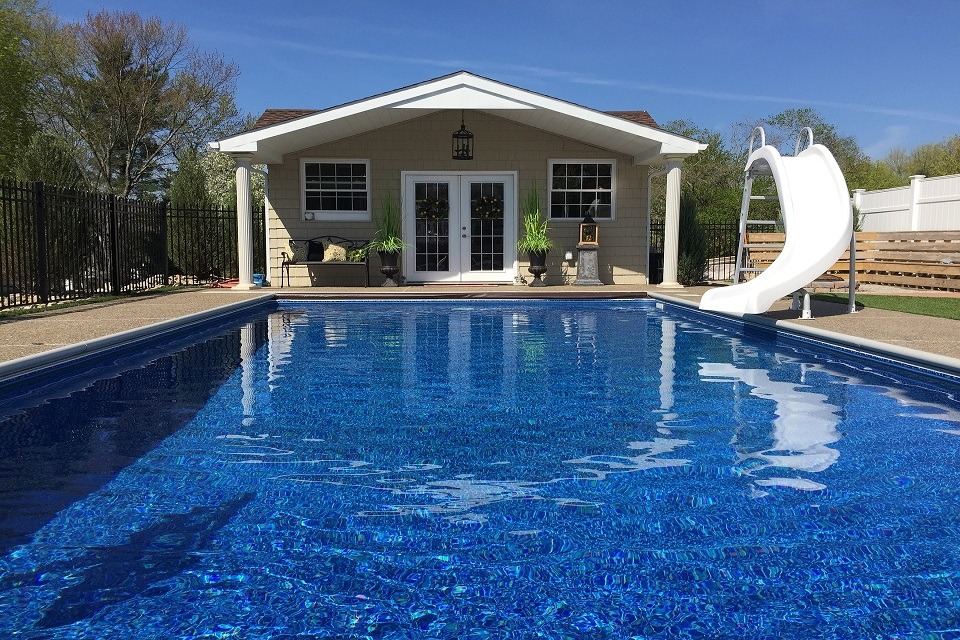Above ground pools are a great outdoor installation for homes with limited space and owners with a small budget. As the name suggests the pool is installed above ground level and have a simple build. Nonetheless, the design of above ground pools welcomes additional installations like pool decks and surrounding patios. Above ground pools are the most affordable type of pool. The price depends on the size and design but they are generally cheaper than in-ground or semi-inground pools. Since the pool is temporary, you can leave with it when you move houses. Assembly and disassembly is quite easy.There are different types of above ground pools and each has its pros and cons

The Inflatable Above Ground Pool
This is the most common and simplest above ground pool. It’s often used by children but bigger adult versions are available and are as large as 18′ round and 48” depth. The main advantage of an inflatable pool is how straightforward it is. To set up the pool, inflate the top ring and commence with filling it. As more water accumulates in the pool the top ring begins to float making the walls expand. Setting up depends on your water pressure but you can easily be swimming within a few hours if the pressure is good. Inflatable pools are easy to move and are great for rental properties. One of the downsides to the pool is the size. The low water volume also presents a challenge when it comes to cleaning. As a result, draining and refilling is the only way to keep the swimming water clean. Moreover, the pool wall can easily tear and create leaks.
Steel Frame Pools
When it comes to sturdy above ground pool designs, the steel frame pool is great option. The pool comprises a top rail, upright pool bracing and footing. The frame components are held together with pins. Installation only takes 1-2 hours. Once assembled, you can commence with filling the pool. Both rectangular and circular options are available when it comes to the shape. The pools can go up to a 52” depth. Steel frame pools are easy to relocate and feature options for both children and adults. As a downside, the pool often requires upgrades that don’t come as standard to the pool. You will need additional money to install a larger pump and a more durable ladder. Moreover, the pull doesn’t perform well during winter and must be disassembled for storage.
Traditional Above Ground Pools
These are a more permanent installation and have a metal or resin frame. Hybrid pools have a combination of metal and resin on their frame. The classic above ground pool includes a top ledge, upright posts and a bottom track. The upright posts are primarily designed to provide support around the wall. The bottom tracks are designed to hold the pool wall. In a traditional above ground pool, the pool wall and pool liner are separate. The liner has numerous alternatives that vary with thickness, pattern and installation. Despite the traditional design, the pool still has a simple installation process that only takes a day in the hands of professionals. The pool is also easy to relocate and comes with better equipment packages. Traditional above ground pools easily last 15-20 years and have minimal maintenance requirements. Moreover, the pool is usable throughout the year no matter the weather. The downsides are the city/town regulations due to the permanent nature of the pool and the labour intensive installation process. Nonetheless, the pool is a great choice if you are looking for something durable and semi-permanent.
Although a semi-inground pool is sometimes categorized as above ground pools, a huge part of its depth is below ground level. Above ground swimming pools are a good option especially when inground pools are out of the question.
I’m a 20-something stay-at-home mother and wife. I have an amazing husband, a beautiful daughter, two loving dogs, and a lazy cat. I wouldn’t change my life for anything! I love to read, listen to music, cook and blog!

Speak Your Mind